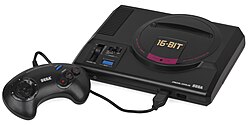This article needs additional citations for verification .(April 2020) |
| |||
|---|---|---|---|
| +... | |||
1988 saw many sequels and prequels in video games, such as Dragon Quest III , Super Contra , Mega Man 2 , Double Dragon II: The Revenge , and Super Mario Bros. 3 , along with new titles such as Assault , Altered Beast , Capcom Bowling , Ninja Gaiden , RoboCop , Winning Run and Chase H.Q.
Contents
- Events
- Financial performance
- Highest-grossing arcade games
- Best-selling home systems
- Best-selling home video games
- Top-rated games
- Major awards
- Famitsu Platinum Hall of Fame
- Business
- Notable releases
- Arcade
- Home
- Hardware
- See also
- References
The year's highest-grossing arcade video games were After Burner and After Burner II in Japan, Double Dragon in the United States, Operation Wolf in the United Kingdom, and RoboCop in Hong Kong. The year's best‑selling home system was the Nintendo Entertainment System (Famicom) for the fifth year in a row, while the year's best-selling home video games were Dragon Quest III in Japan and Super Mario Bros./Duck Hunt in the United States.
